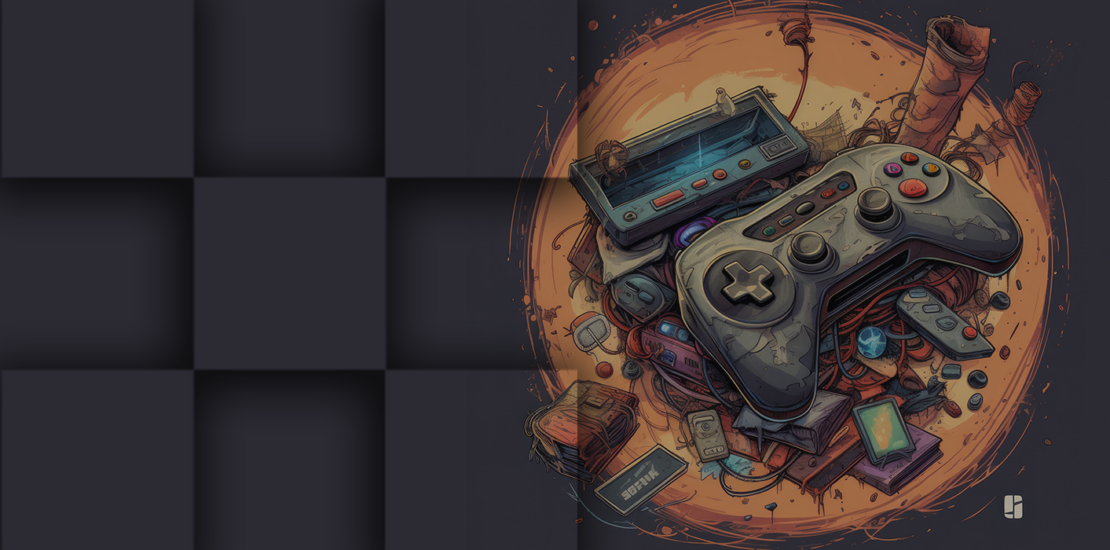- March 1, 2024
- Posted by: Sheela Miller
- Category: Life@iXie

“Art directors look for “skill level, originality, and the x-factor.” – Randy Briley, veteran game art director and senior lecturer at DigiPen Institute “
The gaming industry offers abundant opportunities for enthusiasts to turn their passion into a fulfilling career. Among these avenues lies the realm of Game Art and Design. In the competitive field of game art and design, a stellar portfolio can be your ticket to landing your dream job. Whether you’re a seasoned professional or just starting out, having a compelling portfolio is essential to showcasing your skills and creativity to potential employers. Here are some tips to help you build a portfolio that stands out!
Contents
Showcase Your Skills
Your portfolio is the first thing any prospective employer sees, so make sure to display your best works. Choose pieces that highlight your skills and style. Additionally, focus on showcasing a few outstanding projects and avoid overwhelming your portfolio with mediocre work. Quality is more important than quantity.
Make it Simple and Digital
Your portfolio doesn’t need to be flashy so make sure to keep it simple. Your work will speak for you. Ensure that your portfolio is fully digital. This will allow interviewers to zoom into your work and see it from all angles.
Diversify Your Projects
Game art and design is a multidisciplinary field, so it’s important to showcase a range of skills and expertise in your portfolio. Include projects that show your proficiency in different areas such as character design, environment art, concept art, 3D modeling, texturing, and animation. This will show potential employers that you have a well-rounded skill set and can tackle various aspects of game development.
Tailor Your Portfolio
Every prospective employer has a certain style. If you are looking for a job with a particular employer, then research their style and make sure you include a few works that fit that style. Additionally, if you are applying for a particular job in say character design, you should focus on showcasing your character design and modeling skills. Your portfolio is not static, so make sure you keep it up to date with the relevant trends too.

Include Relevant Details
Make sure your resume and contact details are easily available. Your hard work will go to waste if your prospective employer has no way to contact you. Your portfolio should be easy to navigate, allowing potential employers to quickly find the information they’re looking for.
Keep it Organized
Create separate sections for different types of work, such as character art, environment art, and concept art. Provide clear labels and descriptions for each project, including information about the tools and techniques used. Your employer must go through thousands of profiles, so making it easy to find the details they are looking for is sure to win your brownie points!
Highlight Your Uniqueness
Other than originality, the x-factor or uniqueness that you can contribute with your skills is what sets you apart from the rest. This spark reflects your artistic personality and while it might take time to develop, keep working on more and more projects until you find your personal style.
Stay Current and Relevant
The field of game art and design is constantly evolving, with new tools, techniques, and trends emerging all the time. Stay current with the latest developments in the industry and incorporate them into your portfolio to demonstrate that you’re up-to-date and relevant.
Building a strong portfolio takes time, effort, and dedication, but it’s well worth the investment when it comes to pursuing a career in game art and design. By following the above steps, you can create a portfolio that impresses potential employers and helps you stand out in the competitive world of game development.
Are you looking to make a mark in the realm of game art and design? Your dream job awaits. Connect with us!
Frequently Asked Questions:
1. What should be included in a game art and design portfolio?
Your portfolio should include a variety of projects showcasing your skills in areas such as character design, environment art, concept art, 3D modeling, texturing, and animation. Choose your best work that highlights your strengths and creativity.
2. How many pieces should be in a portfolio?
Quality is more important than quantity. Aim to include a selection of your best work, typically around 10-15 pieces. This allows you to showcase a range of skills without overwhelming potential employers.
3. Should I tailor my portfolio to specific job applications?
Yes, it’s advisable to tailor your portfolio to the job you’re applying for. Highlight the skills and experience that are most relevant to the position. Research the company and the job requirements to ensure your portfolio aligns with their needs.
4. How should I organize my portfolio?
Keep your portfolio well-organized and easy to navigate. Create separate sections for different types of work, such as character art, environment art, and concept art. Provide clear labels and descriptions for each project.
